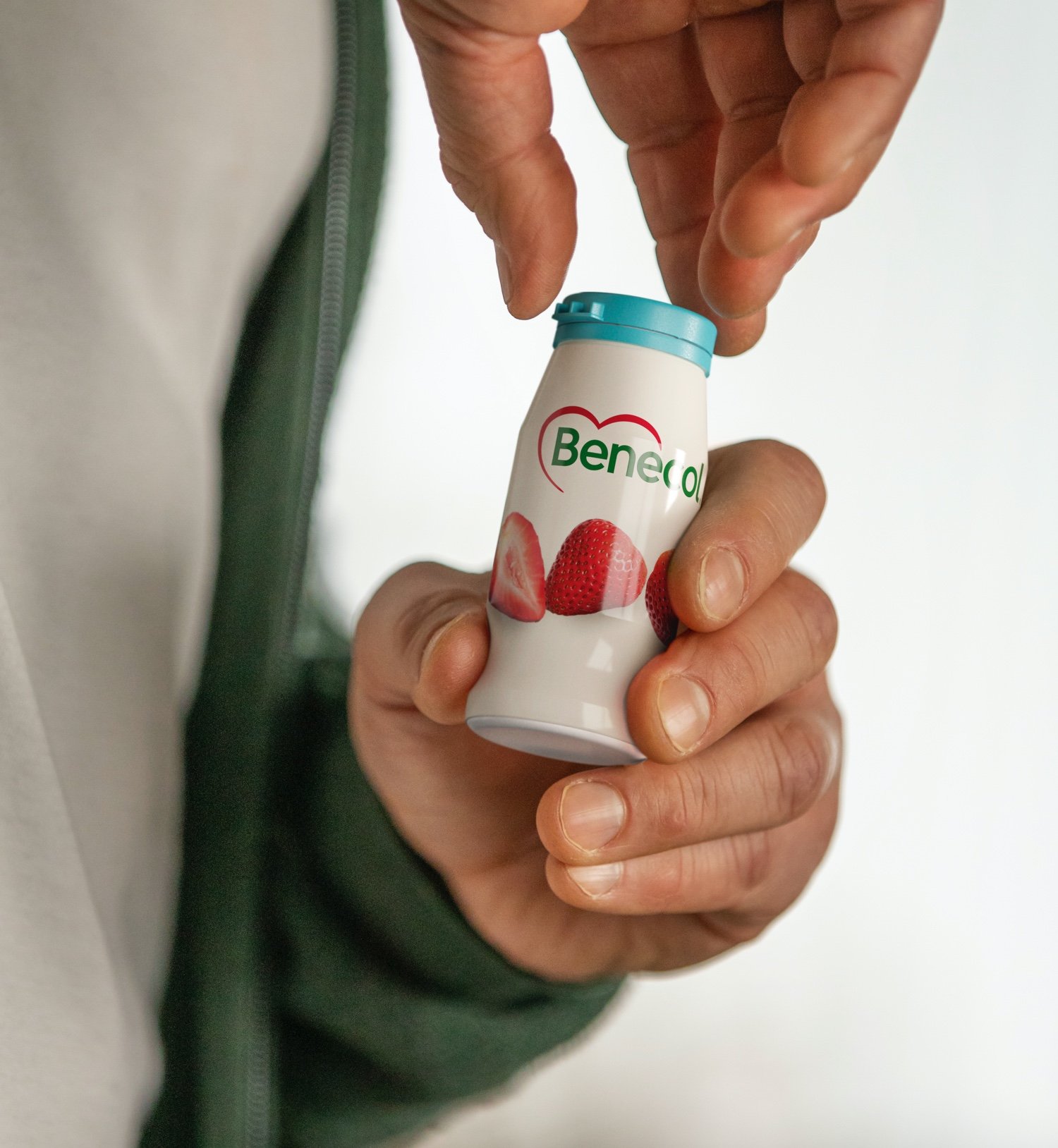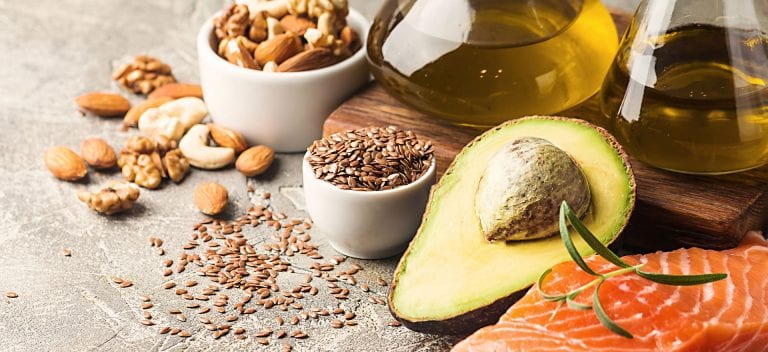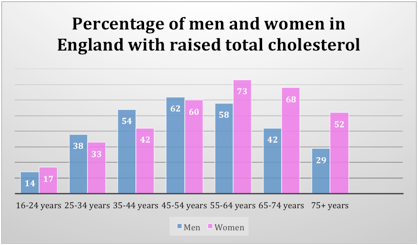Raisio Food Solutions - About cholesterol
In this article, we’ll cover everything from what is cholesterol, to causes of high cholesterol, to how to reduce cholesterol.

Table of content:
What is cholesterol?
The Cholesterol Transport System
What’s the difference between ‘bad’ and ‘good’ cholesterol?
How can high cholesterol affect heart health?
How many people have high cholesterol?
What are the symptoms of high cholesterol?
How is cholesterol tested?
Cholesterol levels – What do the results of a cholesterol test mean?
What causes high cholesterol?
What is cholesterol?
Cholesterol is a wax-like, fatty substance that’s sometimes called a blood fat because it circulates in our blood. It’s an essential part of every cell in our body and has many important functions. For example, it’s used as a building block to make hormones such cortisol, testosterone and progesterone. It’s used to make bile acids, which help to digest fat. And it’s a component of vitamin D. However, if too much cholesterol circulates in the blood, this can affect the risk of coronary heart disease.
Where does cholesterol come from?
A small amount of cholesterol comes from the foods we eat. However, most of the cholesterol in our body is made by the liver. Our liver is also responsible for controlling the amount of cholesterol that circulates in our blood and distributing it to the areas that need it.
The Cholesterol Transport System
How does cholesterol travel around the body?
In a similar way that we use roads to get from one place to another, cholesterol uses the blood as its transport system. It can’t travel on its own though, so it attaches itself to ‘vehicles’ made up of proteins. These combos of cholesterol and proteins are called lipoproteins (lipo comes from the Greek word for fat). In this way, cholesterol is transported around the body and deposited at various points where it’s needed, a little like cars and buses drop off passengers at different locations. There are two main groups of lipoproteins:
1. Non-high density lipoproteins (non-HDL) – or ‘bad’ cholesterol mainly LDL.
2. High-density lipoproteins (HDL) – often called ‘good’ cholesterol.

What’s the difference between ‘bad’ and ‘good’ cholesterol?
LDL or ‘bad’ cholesterol
LDL lipoproteins transport cholesterol from the liver to destinations that need it, such as cells and tissues. However, if the smooth surface of the transport system – the arteries – are damaged, LDL can lose some of its cholesterol along the way. It’s a bit like driving down a bumpy road, which results in you losing a package from your vehicle. The more traffic there is on the road, the more opportunity there is for packages to be discarded on route, too. In other words, when LDL levels are raised, there’s a greater chance that cholesterol will be deposited in the arteries. Over time, this cholesterol can start to build up in the arteries and combine with other substances to form a fatty plaque known as an atheroma in the artery walls. This causes the arteries to narrow and harden – a process known as atherosclerosis. This means blood flows less easily around the body and our heart has to work harder to pump it around. That’s why LDL is called ‘bad’ cholesterol.
HDL or ‘good’ cholesterol
HDL lipoproteins carry excess cholesterol away from the arteries and takes it to the liver. Here, cholesterol is broken down and then eliminated from the body. Higher HDL levels mean there’s more traffic available to pick up cholesterol from cells and take it back to base, removing it from the transport system before it has a chance to build up in the arteries. As a result, high HDL levels are good news for overall blood cholesterol, and coronary heart disease risk and the reason why HDL is called ‘good’ cholesterol.
What is LDL cholesterol?
LDL cholesterol belongs in the group of non-HDL cholesterol. Until recently, LDL was used as the main measure for ‘bad’ cholesterol but it’s now known there are other forms of cholesterol that are bad for us, too. Cholesterol is now divided into the following two groups:
- Non-HDL or ‘bad’ cholesterol – this includes LDL and all other forms of ‘bad’ cholesterol added together
- HDL or ‘good’ cholesterol
What are triglycerides?
Triglycerides are another type of fat that are transported in the blood using lipoproteins. These fats provide energy to cells and tissues. If our energy needs are met, excess triglycerides are stored in fat cells until they’re needed.
Triglycerides in the blood are usually measured at the same time as cholesterol. It’s important to measure them because raised levels can increase the risk of heart and circulatory diseases, especially coronary heart disease and stroke.
Triglyceride levels tend to be higher in people who are overweight, inactive, have type 2 diabetes, metabolic syndrome, eat a diet high in fatty and sugary foods, or drink too much alcohol. The good news is, diet and lifestyle changes that help to reduce cholesterol will also help to reduce triglycerides.
Did you know?
- If you hear your doctor talking about ‘blood lipids’ this is simply the name for all the fatty substances found in the blood, including HDL cholesterol, non-HDL cholesterol and triglycerides.
- When people talk about high cholesterol, they’re usually referring to high levels of ‘bad’ cholesterol.

How can high cholesterol affect heart health?
Cardiovascular disease (CVD)
High cholesterol is also one of the main risk factors for cardiovascular disease (CVD), a general name for all diseases of the heart and circulation. The latest figures suggest a quarter of all UK deaths caused by CVD can be attributed to high levels of bad cholesterol [1].
Other things that increase the risk of CVD include:
- high blood pressure
- smoking
- being overweight
- inactivity
- drinking alcohol to excess
- not eating enough fruit and vegetables
- having type 2 diabetes
- a family history of CVD
- being older, male
Around 7.4 million people in the UK suffer with CVD. It’s also responsible for 27% of all deaths – equal to around 460 deaths a day or 1 death every 3 minutes [2].
Cardiovascular disease (CVD) covers a range of conditions, including those that people are born with or inherit, through to those that typically occur later in life such as coronary heart disease, strokes and peripheral artery disease. Below is some of the Coronary heart disease (CHD) one type of CVD.
Coronary heart disease (CHD)
- It’s estimated someone dies from CHD every 8 minutes in the UK [3]!
- 45% of deaths in the UK from coronary heart disease are attributed to high levels of ‘bad’ cholesterol [4]
- The risk of having a stroke doubles in someone with CHD or who has had a heart attack [5]
Of all the diseases of the heart and circulation, CHD is the most common. A high level of ‘bad’ cholesterol is one of the main risk factors for CHD – when cholesterol builds up in the arteries, causing them to narrow and harden, it’s harder for the blood to flow easily through them. This means the heart has to work harder to pump blood around the body. Over time, this can weaken the heart so it doesn’t work as well as it should. If blood flow is restricted, it can also make it harder to deliver enough oxygen to our organs, a condition doctors sometimes refer to as ischaemia.
CHD can sometimes lead to several common conditions such as:
- Angina
- Heart attack
- Heart failure

How many people have high cholesterol?
The number of people with raised total cholesterol has declined over the past two decades. According to the Health Survey for England – a large ongoing study that looks at the health of people in England – in 1998, around two thirds (67%) of all adults had high cholesterol. Fast forward 20 years and the latest findings reveal that now, just under half of all adults – 47% – have high cholesterol [6]. It’s a move in the right direction. But there are still a huge number of people with cholesterol levels that are too high, putting them at risk of conditions such coronary heart disease. Meanwhile, anyone can be a victim of high cholesterol!
Myth buster: Only elderly people suffer with high cholesterol
It’s true that as we move through the decades towards retirement age, the more likely we are to have raised total cholesterol.
However, after the age of 65 years, the percentage of people with high total cholesterol starts to drop. Added to this, the latest figures show that more than one in six young adults aged between 16 and 24 years have high total cholesterol [5]. This increases to more than a third – 35% – of 25 to 34 year olds [5]. Bottom line: a large number of young people also have cholesterol levels that are too high and so are putting their health at risk.
.jpg?width=416&height=220&name=Health-survey-england-raised-cholesterol%20(2).jpg)
Source: NHS Digital (2019) Health Survey for England 2018
Myth buster: High cholesterol is mainly a problem for men
High cholesterol doesn’t just affect men – women are also at risk and in some cases, even more so than men! In fact, figures show that slightly more young women aged 16 to 24 years have raised total cholesterol than men of the same age. Men then take the lead up to their mid 50s. But after the menopause and into old age, far more women than men have high total cholesterol. For example, almost three quarters – 73% – of 55 to 64 year-old women have raised total cholesterol compared with 58% of men of the same age [5]! The reality: women need to be just as vigilant at getting their cholesterol levels monitored, especially after the menopause.

Source: NHS Digital (2019) Health Survey for England 2018
What are the symptoms of high cholesterol?
High cholesterol usually has no visible or obvious symptoms making it a hidden health hazard sometimes known as the ‘silent killer!’ Most people aren’t aware they have high cholesterol until they start suffering with symptoms like chest pain or breathlessness linked to specific heart conditions. That’s why it’s so important to get cholesterol levels checked.
Did you know?
Optometrists can sometimes spot the warning signs that point to the presence of high cholesterol during a routine eye test.
They are able to detect abnormalities in parts of the eye such as the retina or cornea that could indicate a possible problem with cholesterol. If they spot any such signs, they may recommend you have a cholesterol test and inform your GP of their findings.
Myth buster: Only overweight and unfit people have high cholesterol
This is simply not true. While being overweight and inactive tend to go hand in hand with high cholesterol, being a healthy weight and exercising regularly aren’t an automatic green light for healthy levels of cholesterol. The truth is even slim, fit people can have high cholesterol. That’s why it’s so important to get your cholesterol checked.
How is cholesterol tested?
Blood cholesterol levels are easily checked with a finger prick test or by taking a sample of blood from your arm. The easiest way to arrange this is through your doctor’s surgery or health centre. If a sample of blood is taken, it will be sent to a lab and you should get the results within a few days. You may be asked not to eat anything for up to 12 hours beforehand (this is known as a fasting blood test) although this isn’t usually necessary. A finger prick test is done by pricking your finger and putting a drop of blood onto a strip of paper, which then goes into a machine and checks your cholesterol within a few minutes.
Many pharmacies offer cholesterol tests, although you might have to pay for them. You can also buy home-testing cholesterol kits from shops or online but these may not be as reliable as a cholesterol test carried out by a health professional. It’s always better to contact your surgery or health centre and arrange a cholesterol test through them.
Cholesterol levels – What do the results of a cholesterol test mean?
A cholesterol test usually measures:
- Total cholesterol – this is the total amount of cholesterol in the blood and includes both ‘good’ and ‘bad’ cholesterol. It’s sometimes called ‘serum cholesterol’ or ‘TC’
- HDL or ‘good’ cholesterol – the higher the better
- Non-HDL or ‘bad’ cholesterol – the lower the better
- Triglycerides – the lower the better
- Total cholesterol to HDL ratio – this is often written as TC:HDL and is a value that looks at the proportion of HDL in relation to total cholesterol – the lower the better.
In the UK, components of cholesterol are measured in units called millimoles per litre of blood (mmol/L). As a guide, these are the values healthy adults should aim for [7].
It’s important to realise these values are only a guide and your doctor or nurse may recommend different levels for you, depending on other risk factors you have such as smoking or being overweight, and other medical conditions such as type 2 diabetes.
When you get the results of your blood test, you may only be given the value for total cholesterol, but you can always ask for the values for ‘good’ and ‘bad’ cholesterol, as well as triglycerides.
If your cholesterol or triglyceride levels come back as being high, your GP will advise on next steps. This may include offering you help and advice on making changes to your diet and lifestyle, as well as possibly prescribing medication to lower cholesterol.
Although high levels of ‘bad’ cholesterol are a risk factor for cardiovascular disease (CVD), it’s important to realise they are only one part of the picture. Smoking, lack of exercise, being overweight, having high blood pressure or type 2 diabetes and a strong family history will all affect your risk, too – and the more of these risk factors you have, the greater your chance of suffering with CVD.
Who should have a cholesterol test?
Your GP will normally suggest having a cholesterol test if they think you might be at risk of high levels. This may be because you have a family history of CVD or other risk factors such as high blood pressure, type 2 diabetes or are overweight.
Meanwhile, everyone aged between 40 and 74 in England is entitled to a free NHS Health Check every five years. This includes a cholesterol test, as well as measuring blood pressure, blood sugar levels and weight. The older we are, the greater the chances of having high cholesterol so this test is not something to be missed. Your GP surgery or local council will usually send you a letter inviting you to attend. If you don’t get this, you can always request the Health Check yourself. Find out more information at www.nhs.uk. Meanwhile, similar schemes are available in other parts of the UK – contact your GP surgery to find out what’s available.

What causes high cholesterol?
People of any age, gender or ethnic background can have high cholesterol. Certain medical conditions such as hypothyroidism (an underactive thyroid gland), kidney or liver disease, a family history of high cholesterol and being born with a genetic condition called familial hypercholesterolemia may also put us at risk. These are all things we have no control over. Meanwhile, some medications can increase the risk, which your doctor can advise on.
However, many of our everyday habits can also leave us with high cholesterol – and these are things we have the ability to change. To help achieve and maintain cholesterol within healthy limits, the key is to focus on those things we can control. The good news is there are plenty of things we can actively do something about to help lower our cholesterol.
Things that increase our cholesterol that we have the ability to change include:
- Smoking
- Lack of exercise
- Eating an unhealthy diet, especially one that is high in saturated fat
- Being overweight, especially with too much fat around our waist
- Having poorly controlled type 2 diabetes
- Drinking too much alcohol
Read more: Can you inherit high cholesterol? – Famial hypercholesterolemia
Plant stanol ester in Benecol foods are proven to be an effective part of a balanced and varied and an overall healthy diet to lower cholesterol.
80 + clinical studies have proven that plant stanols in Benecol products actively lower cholesterol.
Read more about plant stanol ester
References:
[1] British Heart Foundation (2020) Heart and Circulatory Disease Statistics 2020. Table 5.1. NB: ‘Bad’ cholesterol is defined as LDL cholesterol in this document.
[2] British Heart Foundation (2020) UK Factsheet. January 2020.
[3] British Heart Foundation (2020) UK Factsheet. January 2020.
[4] British Heart Foundation (2020) Heart Statistics: Heart and Circulatory Disease Statistics 2020. Table 5.1. NB: ‘Bad’ cholesterol is defined as LDL cholesterol in this document.
[5] British Heart Foundation (2020) UK Factsheet. January 2020.
[6] NHS Digital (2019) Health Survey for England 2018. Table 4.
[7] Heart UK. Getting a cholesterol test. https://www.heartuk.org.uk/cholesterol/getting-a-cholesterol-test
[8] British Heart Foundation. Familial Hypercholesterolaemia. https://www.bhf.org.uk/informationsupport/conditions/familial-hypercholesterolaemia
[9] Hackshaw, A et al (2018) Low cigarette consumption and risk of coronary heart disease and stroke: meta-analysis of 141 cohort studies in 55 reports. British Medical Journal 360. doi: https://doi.org/10.1136/bmj.j5855
[10] Commission Regulation (EU) No 686/2014 as 20 June 2014 amending Regulations (EC) No 983/2009 and (EU) No 384/2010 as regards the conditions of use of certain health claims related to the lowering effect of plant sterols and plant stanols on blood LDL-cholesterol.
Share this
You May Also Like
These Related Stories

Oats are one of the healthiest grains on earth

Why is Raisio the best partner for contract manufacturing of plant-based drinks?

